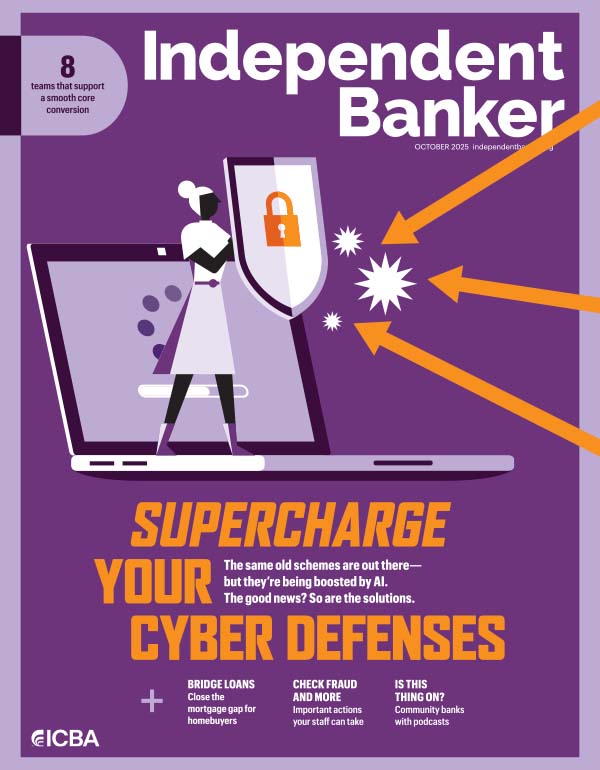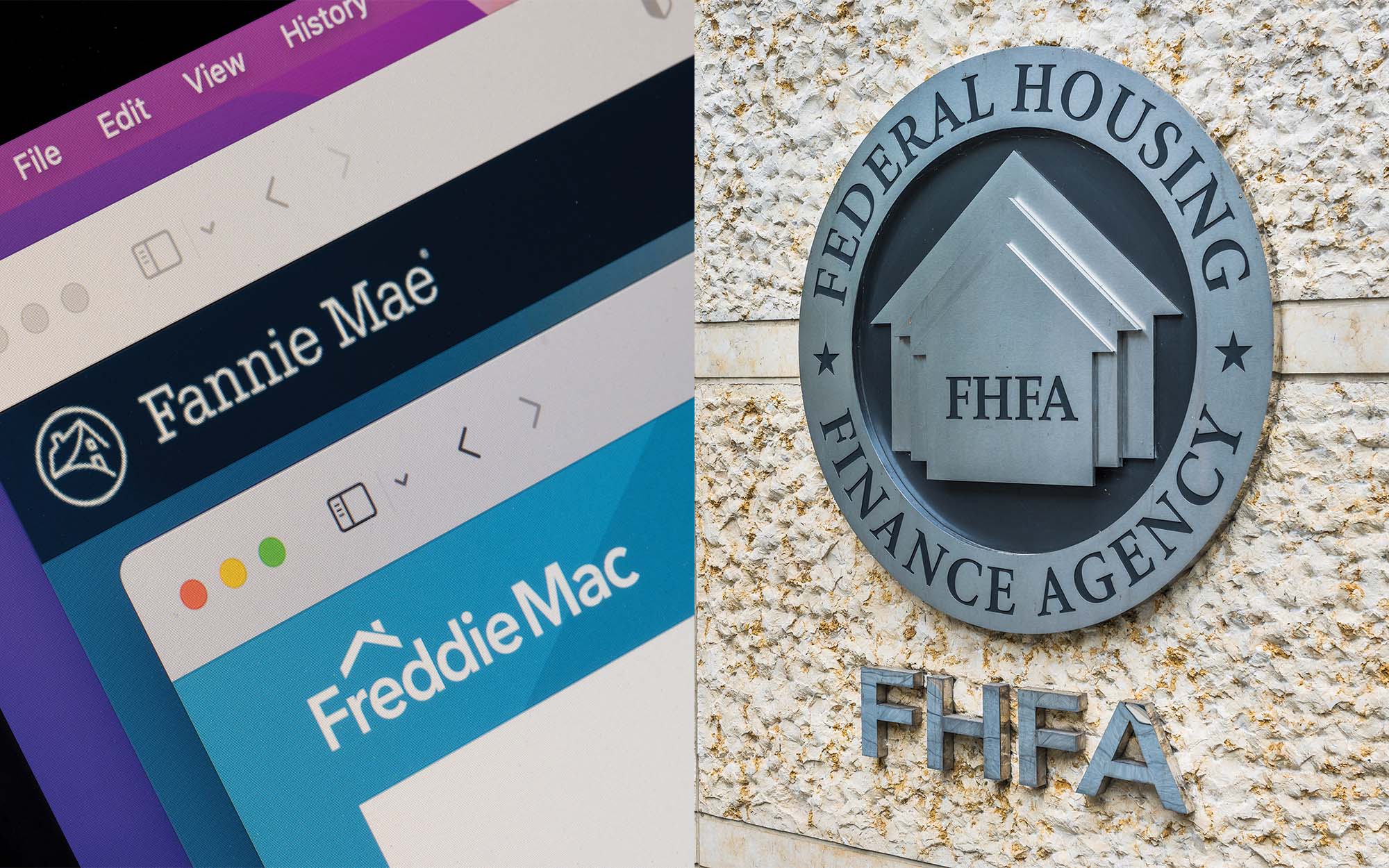Technology sometimes emerges at a dizzying pace. Perhaps no example is more acute than the explosion of generative AI in late 2022. Since then, there have been daily announcements from technology vendors claiming that AI has been added to their products.
A healthy dose of skepticism is warranted with these mostly unproven use cases. The regulators have rightfully warned that banks need to be careful not to introduce AI that misleads or harms consumers. (See "Risk or Reward: A Community Bank's Guide to AI") But some community banks are likely feeling the pressure to explore this and other new technologies as soon as they emerge in the market.
Community banks don’t have the luxury of adopting every new technology, nor can they take a “wait and see” approach. As banks look to refine their product offerings, the markets they serve and their relationships with their customers, they can home in on the technology that enhances their business.
While some emerging technologies feel like solutions in search of a problem, other categories have proven necessary for community banks to maintain a competitive edge. Here are four of them.
1. Composable banking
For a long time, an all-in-one solution was the dream for any bank, whether it was the core provider or a loan origination system. But as banks look to serve niche customers or offer unique experiences, many of these monoliths have fallen short.
Composable banking products are modular and powered by open banking and APIs. Call it composable banking, call it unbundling, call it plug-n-play—while the industry hasn’t agreed on a singular term, the concept is that a bank can have best-in-breed solutions, creating its own bespoke tech stack.
The impact of composable banking on the consumer experience is apparent. In the podcast Banking on Composable, fintech influencer Alex Jimenez says, “In my mind, if we have true composability, you would have an experience that is seamless throughout, whether you’re doing an app, whether you’re in the browser … whether you’re applying for an account. ... It all looks and feels the same.”
As a result of adopting composable banking, the scrutiny has shifted from “What can an all-in-one vendor offer?” to “How good are this vendor’s APIs?” Not all APIs are created equally or maturely developed. It would fall to a bank’s technical administrator to bridge the gaps.
As banks evaluate vendors, they should ask if the API operates on a closed or open framework. The vendor should be able to supply API documentation and provide information about training or support available to the institution. During the evaluation process, a bank’s internal team should assess how receptive the vendor is to integrations with other platforms.
This type of technology also enables banks to offer new service lines, according to Charles Potts, ICBA’s executive vice president and chief innovation officer. “The ability to plug a fintech and all its solutions into the bank’s tech stack and provide [the bank] with the kind of oversight and capabilities to manage these things? That’s banking-as-a-service as a strategy.”
2. Real-time payments
FedNow has been, understandably, top of mind for many bankers, especially since its initial rollout started in July of this year. It’s an exciting time, as the U.S. has lagged other parts of the world in offering real-time payment solutions.
While a consumer or business can only use FedNow if their financial institution participates, it’s a “welcome step forward,” according to Piret Loone, chief business officer and general counsel at Link Money, a pay-by-bank platform for merchants. “If FedNow can move towards interoperability with the robust but not real-time ACH network, perhaps that full range of payments will become possible in the U.S.,” she says.
The implementation of FedNow is fraught with technical challenges, however, as the business case and cost effectiveness are not fully clear. Service providers are hesitant about investing resources to create a solution for banks to use FedNow without knowing the real return on investment. Meanwhile, products like Zelle and Venmo have cropped up over the years, offering faster payments and creating a hodgepodge of options, a far cry from a universal solution for real-time payments.
“Consumers are clearly demanding more choices when it comes to payments.”—Piret Loone, Link Money
Real-time payments have even entered the international scene, with EBA Clearing, The Clearing House and SWIFT announcing the pilot program of the Immediate Cross-Border Payments (IXB) service. Community banks should keep an eye on this technology as it progresses so they can potentially offer real-time international payments to their business customers.
Whether a single solution will emerge or if banks will continue to partner with fintechs to offer payment options, “consumers are clearly demanding more choices when it comes to payments,” Loone says.
3. Data and analytics
Individual bank solutions, such as loan origination or account opening, may have offered analytics for years, but they fall far short of offering a complete picture of customers’ relationships with the bank. The data is siloed within the product itself, limiting its usefulness.
But robust data analytics platforms and tools are quickly changing that landscape. It’s a culmination of needing customer data to improve the overall customer experience and real-time insights that can guide decision-making. Data analytics tools can consolidate the different sources a bank may have, from the core vendor to loan origination to underwriting.
“I think as bankers, especially community bankers, we have really rich intuition about our customers, our communities and our portfolios.”—Greg Evans, Merchants Bank, N.A.
And the use cases for analytics are far-reaching. Banks can use the data to offer more targeted and personalized marketing experiences, evaluate customer behavior that affects the bank’s balance sheet, evaluate risk in the loan portfolio, and even develop new product offerings. The existence of data is one thing; putting it into action is another.
Greg Evans, president and CEO of $2.6 billion-asset Merchants Bank N.A. in Winona, Minn., has found that there’s a lot of utility in data and the ability to leverage data analytics. “I think as bankers, especially community bankers, we have really rich intuition about our customers, our communities and our portfolios,” he says.
“But the data doesn’t lie,” Evans notes. “Who we think our best customers might be, or our most loyal customers might be, isn’t always what we think it is.” Unified, objective, rich data can answer those questions for banks and give them the ability to move quickly and address market-driven trends.
4. Fraud detection and prevention
When banks combine customer experience with speed of service, they must also contend with the increased risk of fraud. Fraudsters are getting more sophisticated, with ACH fraud, check fraud and identity fraud all on the rise. According to a J.D. Power and Associates Banking and Payments Intelligence report, 36% of banking customers in the U.S. had experienced some type of financial fraud between May 2022 and May 2023.
Any financial institution considering FedNow implementation must also think about real-time fraud detection. The risk and compliance practices must be in place before banks can allow customers to send instant payments. Retroactive controls won’t be sufficient in a world of real-time transactions.
While FedNow may stimulate new solutions around real-time fraud detection, the technology has been rapidly evolving for years, especially as banks contend with Know Your Business (KYB), Know Your Customer (KYC) and AML regulations and the rise in online account opening. Outdated tools and processes can hinder the onboarding process, yet without the proper identity verification in place, banks open themselves up to risk.
And far too often, the “standard” practices for identity verification won’t be enough. Fraudsters can carry out a wider range of fraud schemes using tools like generative AI.
Quick Stat
36%
of banking customers in the U.S. experienced some type of financial fraud between May 2022 and May 2023.
Source: J.D. Power and Associates
“Banks should deeply understand how generative AI could break their existing fraud prevention processes,” says Kyle Mack, CEO and cofounder of Middesk, a business identity platform. “[They] must continuously monitor their customers to identify changes in risk profiles, not just verify their identities.”
Technology like machine learning can alert banks to abnormal account activity, sifting through millions of data points at a rate humans could never hope to match. Behavioral biometrics can analyze mouse activity or typing patterns, which are very difficult to imitate. These types of technology can distinguish between human behavior and an automated attack or identify behavior that’s inconsistent with the account holder.
Solving bank problems and implementing solutions
As community banks look to add more sophisticated products to their tech stack, they must consider the technical expertise and resources required. Banks with limited internal resources should vet their vendors and fintech partnerships for support and training assistance.
“Low-code” and “no-code” solutions have been the buzzword-y, do-it-yourself response from many tech companies. In reality, these apps can only take a bank so far. The bank still needs someone with the skills, aptitude and strategy know-how to take on a no-code or low-code solution. It might be easier and more cost-effective for a bank to pay the vendor or an outside consultant to assist with the technical aspects of implementation. A no-code platform doesn’t help if someone internally doesn’t know what to do with it, and it shouldn’t be a priority when comparing vendors.
Banks must think beyond the initial implementation and assess whether the technology will solve the real challenges that the bank is facing. Will the technology live up to its promises? Will the vendor be a true partner as the challenges continue to evolve? Can the bank lean into the culture change required to adapt to the new technology?
It’s about balancing the “latest thing” to hit the market with vendors that truly understand community banking needs. Even if the technology itself is new, the challenges themselves have existed for years. The only thing that’s changed is the speed with which new solutions emerge and how quickly banks must evaluate and make decisions.
The wild west of cryptocurrency
If community banks were curious about the claims and promises of cryptocurrency, that curiosity has turned into full-blown skepticism and frustration in the wake of 2022 and the subsequent “crypto winter.” Following the bankruptcies of several major cryptocurrency exchanges and the spectacular implosion of FTX (along with tens of millions of dollars missing), it begs the question: How does crypto recover?
Bankers have long been saying that entities claiming to be financial institution equivalents have posed major risks. Lack of oversight and regulation certainly played a role in the downfall of some of these entities. And for banks that still want to support a customer’s digital assets, there are still very big, unresolved regulatory and legal questions.
Without clear guidance from policymakers, the world of crypto continues to be an uneven playing field. Banks must follow specific laws, while these other entities don’t.
In June, ICBA asserted that most crypto assets likely qualify as securities and should be subject to securities laws and regulations.
On a global level, the issues become even more complex. While cryptocurrency could facilitate global funds transfer, world leaders must develop a global crypto policy framework, an issue on the table for the G20. Without it, a single country’s “light touch” approach could lead to a hotbed for crypto-related bad actors.
This is, perhaps, one arena where “wait and see” is the best approach.
Merchants Bank’s data journey
When Greg Evans started at Merchants Bank, N.A. in 1989, he was the Winona, Minn., bank’s first-ever internal marketing hire. He remembers being puzzled that the banking industry didn’t rely more on its own data.
Today, Evans is president and CEO of the community bank, a role he assumed in 2017. “When I became CEO, I made it clear that we needed to get serious about data, data analytics and leveraging the rich information we have about our customers in order to serve them better, make better business decisions [and] contribute to long-term profitability,” he says.
As part of this, Merchants Bank partnered with KlariVis, a platform that provides centralized data analytics for banks. The company is also an ICBA ThinkTECH Accelerator alumni and ICBA preferred service provider.
“[KlariVis’ solution] has allowed us to accelerate significantly with the front-end deliverables in the form of reports, dashboards and drill-down utilities,” Evans says.
The community bank’s lenders, market presidents, risk management personnel, executives and others responsible for managing portfolios and customer relationships use the platform. Evans says he’s quickly seeing a need to expand the bank’s usage into other roles throughout the organization. The bank has also formed a business intelligence steering committee that works on specific use cases.
“We want to try to do that in a way that’s consistent across the enterprise so that there’s a clear set of action-oriented performance expectations of how to use the tool and how to use the information,” says Evans. “We’re getting insights on a daily basis … real-time access at our fingertips.”






